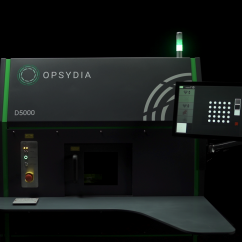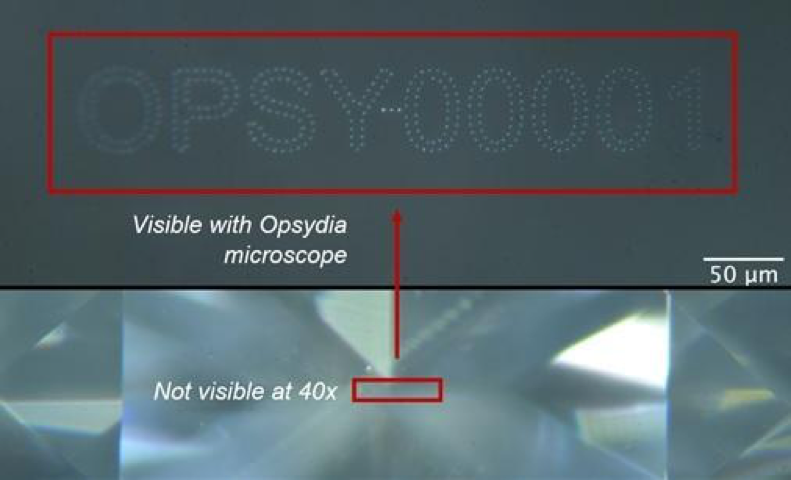Articles and News
Service News: New Diamond Identifier Won’t Impact Clarity, Even On Flawless Stones February 15, 2021 (0 comments)

Oxfordshire, UK—Using sub-surface laser technology, diamond security specialist Opsydia has created its smallest and faintest identifier to date. The new nano-scale identifiers allow even an internally flawless natural diamond to have a logo, serial number, or encrypted code placed beneath its surface without affecting its clarity grade, something independently verified and confirmed by two leading grading laboratories, including the Swiss Gemmological Institute (SSEF).
"We are honoured to have been able to collaborate with Opsydia in refining the criteria for a Nano ID so that it can be integrated into diamond grading practices. Diamond traceability and security are important issues in the diamond supply chain, and it is important that such scientific techniques be developed for the trade and to ultimately strengthen consumer confidence,” said Dr. Michael S. Krzemnicki, director of the Swiss Gemmological Institute SSEF, Basel.
These identifiers create a physical link between a specific stone and its grading report, blockchain record, or branded jewelry origins. The Nano-ID is not detectable with a standard grading microscope and must be read at >100x magnification. (A special Opsydia ID viewer device capable of reading identifiers is currently in the research and development phase as well.)
Opsydia CEO Andrew Rimmer says, “This is a vital milestone for Opsydia as it means every diamond, no matter its clarity or size, can be secured with an identity feature beneath its surface. This presents new opportunities for grading houses, diamond manufacturers, and luxury diamond jewelry brands that want to achieve the next level of security and anti-counterfeiting, while also supporting existing blockchain initiatives.”
The process uses a high-precision, ultrafast laser to place logos, alphanumeric sequences or coded shapes (known as identifiers), as small as one micron in diameter, at a depth of up to 0.25 millimetres beneath the surface of a diamond. This laser is tightly focused only once it passes the surface of a diamond, therefore only creating the identifier at a selected depth without affecting the surface condition or polish. It can be used below any part of a diamond’s surface, such as the table or a specific facet.

This alphanumeric identifier is less than 50 μm across and is not visible at 40x magnification.
Now a second version of the identifier, called a Loupe ID, was introduced by the company this week. The Loupe ID is larger and denser and is visibile using a standard 10x loupe and can be placed at depths of up to 0.25 millimetres (250 microns) beneath the surface of a diamond. It can be used in strategic places to allow valuers, grading houses, and consumers to quickly distinguish laboratory-grown or branded items from natural diamonds. Neither the Loupe ID or Nano ID identifiers affect the surface polish of a diamond, thus not compromising its finish and/or value, says the company.
Laboratories can use the process to put a report number beneath the surface of a diamond, creating a physical link between a specific stone and its report and reducing fraud, something Rimmer suggests could be offered as a premium service for exceptional stones. For the volume market, he says placing identifiers in diamonds can aid in transparency initiatives, reduce the risk of counterfeiting, and protect against laboratory-grown diamond substitution.
The system can place unique identity features in melee stones of just 0.5 mm in diameter and is capable of processing 50,000 to 100,000 stones per year in an industrial environment. Encryption techniques ensure the unique identifiers of one company with the system cannot be fraudulently acquired and processed by another Opsydia user. The device itself is about one meter wide and standard-doorway accessible, says the company.







